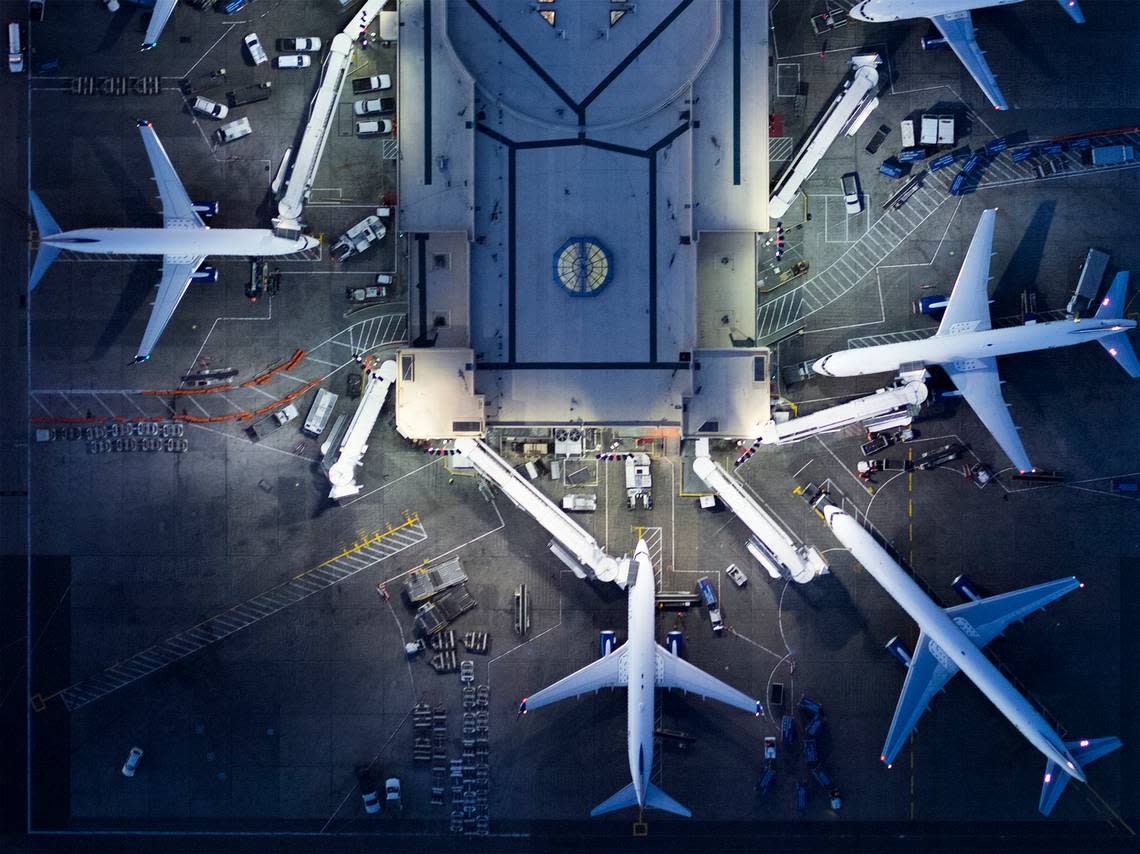
Are we off the hook for having a giant airport plunked down in a rural area of Thurston County or Pierce County?
Warren Hendrickson, the acting chair of the Commercial Aviation Coordinating Commission, says he considers it “a low probability,” and will recommend against it. He thinks the Commission is likely to vote against pursuing a rural site at its March 2 meeting.
At the same time, the legislature is considering a do-over: Under House Bill 1791, the similarly named Commercial Aviation Coordinating Work Group would be created and tasked with addressing where (if anywhere) to put a new airport.
With a new Work Group on the horizon, the uncertainty, if not the probability, lingers. But we’re glad to see that the new effort “appears to be intended to take a holistic approach into assessing the state of aviation in Washington and allows the working group to mull alternatives to pursuing additional airport capacity.”
That is a welcome enlargement of the conversation, but it needs to include more than “mulling alternatives.”
The mission of the CACC was simplistic: Sea-Tac is reaching capacity, so we need another big airport.
This is the same line of thinking transportation planners use about Interstate 5: When it gets too crowded, the solution is to build more lanes. We’ve been using that strategy for many years, and added many new lanes. I-5 is still often dysfunctional.
The CACC noted that urban areas in the Puget Sound region have become too developed to accommodate a new airport, so we must consider sacrificing a rural area to create another crowded urban area around a new airport, served by more new freeway lanes.
Hendrickson cites “a projected loss of $31 billion in annual economic impact and 209,000 jobs” if we don’t create more airport capacity soon.
But he cites no numbers about the value of demolished homes, job losses, or the economic loss of local farms, food production and rural enterprises. Nor does he cite any measure of the environmental impacts on land, air, water or wildlife.
So while the proposed wider frame of discussion in HB 1791 is good, it’s still not wide enough. We need a bigger, broader and more inclusive way to think about our shared future and our growing population.
We also need a new set of thinkers. Transportation planners think about transportation. Airport and airline officials think about airplanes.
We need urban planners, ecologists, farmers, economic development researchers, climate activists, and visionaries. Many should be young, because the future belongs to them. We need them to think about the transformational changes our region faces, not the incremental changes of just the next few years. Transportation planners should be at the table, but it shouldn’t be their table.
The climate change challenge must be part of the discussion: How do we plan to prevent and mitigate climate catastrophes like wildfires, rivers too warm for salmon, and heat domes? How do we build livable, walkable urban areas and preserve open space and farmland as our population grows? How do we adapt our economies to achieve these goals, reduce inequality and promote trustworthy democratic institutions?
Only by answering these questions can we lay the foundation for conversation about airports, freeways, and — please! — alternatives such as high speed rail.
The CACC’s mission confined it to inside-a-very-small-box thinking. But we mustn’t just enlarge the box.
It is indeed a herculean task to wrestle with our future writ large and long, but if the new Commission is intended to take “a holistic approach,” that’s what the word means.
As the world warms and technological change accelerates, the old adage that everything is connected is true in a new way: the connections are becoming compressed. It is now impossible for an economic region such as Puget Sound — or really, the I-5 corridor from Vancouver, B.C., to Portland — to have a productive conversation about something as big as a major airport without discussing the larger context of our civic, climate, environmental, economic, and equity values and goals.
We hope that is where the next conversation starts.
